Mandi Ehman's Blog, page 27
February 28, 2015
Weekend reading: February 28, 2015

From Instagram: The tiniest skier on the slopes.
Despite another crazy week that didn’t really include time for a day off, we headed out on Thursday for a day at Timberline (which offers $12 lift tickets for locals on Thursdays!) with some friends.
It was so much fun to watch our girls ski with confidence around the resort. The three big girls all experienced their first black diamond run, rode the lifts together, and were comfortable skiing either in front of or behind the adults without worrying about being with them at all times, and even the two littles got a short ski session in.
Next year, instead of a trip to Snowshoe, I’d really like to buy everybody really good gear (hmm, this could be our big Christmas gift from all of the grandparents rather than toys?!) and spend every Thursday at Timberline…I can only imagine how much more their skills will improve with regular practice!
What I’m reading: Team of Rivals by Doris Kearns Goodwin (this is a long one!), The Hobbit by J.R.R. Tolkien (still!), The Sweetness by Sande Boritz Berger, The Sacred Year by Michael Yankoski
What I cooked: shrimp alfredo (with homemade alfredo sauce), sausage balls, chicken with lemon-garlic green beans & potatoes (this was a disaster, even though it sounded amazing!), apple zucchini muffins
What I’m thinking about:
{Follow my personal Facebook feed for the things I’m thinking about and talking about all week!}
Inspiration for breakfast Easy Ham & Egg Breakfast Bowls | Heavenly Homemakers Sweet Potato Apple Hash | PaleOMG Swiss Muesli Customizable Breakfast Bowls | Chocolate-Covered Katie Inspiration for life 7 ways I’m minimizing decision fatigue in my daily life. | Modern Mrs. Darcy Secret of Adulthood: Succeed by Failing | Gretchen Rubin An Addict’s Guide to Overcoming the Distraction Habit | zen habits 5 Ways to Jumpstart Change In Your Life | Carrots for MichaelmasHave a great weekend!
P.S. The Live course theme for March is connection, friendship and community with guest contributor Crystal Paine. Join us!
 Mandi Ehman is the blogger behind Life Your Way. She and her husband have four beautiful girls plus one baby boy, and together they live, work and homeschool on a little slice of heaven in wild, wonderful West Virginia. Mandi loves coffee, chocolate, easy meals, beautiful things and minimalist spaces.
Mandi Ehman is the blogger behind Life Your Way. She and her husband have four beautiful girls plus one baby boy, and together they live, work and homeschool on a little slice of heaven in wild, wonderful West Virginia. Mandi loves coffee, chocolate, easy meals, beautiful things and minimalist spaces.
Weekend reading: February 28, 2015
© 2010-2015 Purple Martin Press, LLC | All rights reserved



February 27, 2015
Why it’s okay to believe your way is the best way

I talk a lot about respectful dialogue, listening to what others have to say, and living in the middle, so the title of this post might surprise you.
Let me clarify: I think it’s okay to believe the decisions you make and the way you do things is the best way for your family.
Actually, I don’t just think it’s okay; I think it’s good.
There’s a lot of peace and confidence that comes from being sure of your decisions. And while I think there’s value in hearing what other people say, seeking advice, and keeping an open mind, at some point it’s okay to follow your gut and take ownership of your decision.
For example, all of my girls preferred to sleep on their tummies as babies. Because they had reflux, I researched tummy sleeping endlessly. Based on that research—and after watching each of them choke on spit up while sleeping on their backs—I decided there were other risk factors that play an important role in SIDS ands that correlation doesn’t equal causation. And so we let them sleep on their tummies. I understood the risks and decided that given our circumstances and the research I’d read, I was comfortable with them sleeping that way.
But that’s not to say I think you should let your babies sleep on their tummies. In fact, I don’t think you should unless you’re comfortable enough with the decision that if the unthinkable should happen, you wouldn’t beat yourself up over it.
Here’s my point: it was precisely because I was comfortable with my decision that I can support your decision to do the opposite.
Although I’ve had this post title in my notebook for months, I was inspired to actually type up my thoughts the other night while finishing Daring Greatly by Brene Brown. In the final chapter, on wholehearted parenting, she emphasizes this again and again:
“[T]his work has taught me that when I feel self-righteous, it means I’m afraid. It’s a way to puff up and protect myself when I’m afraid of being wrong, making someone angry, or getting blamed…
“When we feel good about the choices we’re making and when we’re engaging with the world from a place of worthiness rather than scarcity, we feel no need to judge and attack…
“What I’ve learned from my work is that there are a million ways out in the world to be a wonderful, engaged parent, and some of them are going to bump up against what I personally think about parenting…
“Daring greatly means finding our own path and respecting what that search looks like for other people.”
It’s so true. If I was unsure about the decision to let my babies sleep on their tummies and you started talking about why your babies only sleep on their backs (or their sides or whatever the latest recommendation is), I’d most likely feel guilty and like I needed to defend it. Instead, I have peace and confidence in my decision, and I don’t need to argue or to make you agree with me.
Similarly, I am confident that being willing to use a few shortcuts in the kitchen (like frozen french fries as a side) is the best option for our family. I’ve tried only making food from scratch and it creates an unhealthy environment for our family because it’s too much. If you make everything from scratch, though, I’m happy for you! I think that’s awesome, and as long as you’re not being nasty to me with your opinion, I don’t feel like I need to defend my choice or compare how I spend my time to how you spend yours. If I was feeling guilty over those french fries, though, I’d respond a lot differently.
Homeschooling versus public or private schooling, the books my children do or don’t read, how much freedom and responsibility we give them, working in or out of the home…and so on. The more confident I am in my decisions, the less I feel the need to defend them or convince you that I’m right.
To be clear, there are still a lot of areas where I feel at a loss: Jacksons sleep issues, picky eaters (and don’t you dare blame the frozen french fries—ha!), connecting with my kids individually, dealing with adolescence, etc. We’re figuring out a lot of it as we go.
But many of the so-called “mommy wars” could be avoided if we all felt more confidence and ownership of our own decisions without worrying so much about what other people are doing!
Have you found this principle to be true in your own life?
Why it’s okay to believe your way is the best way
© 2010-2015 Purple Martin Press, LLC | All rights reserved



February 26, 2015
Where intentional living and self-care intersect {and 8 books I love}
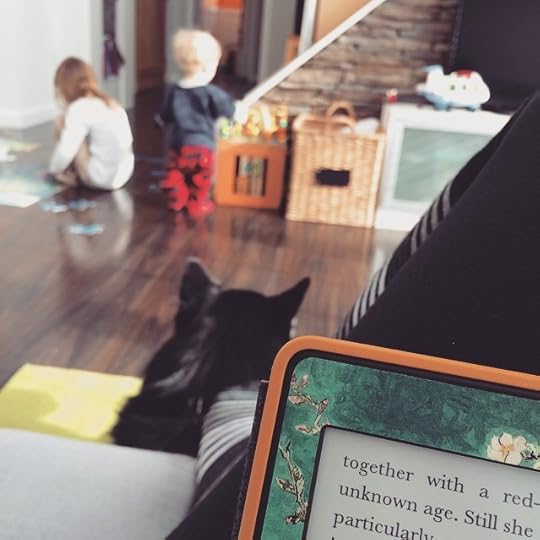
Some women struggle with believing that they should take care of themselves and some struggle with overscheduling and finding the time to make it happen (I tend to fall into the second group).
What I’m realizing this year, though, is that intentional living and self-care go hand-in-hand.
At it’s core, living intentionally means living in a way that fits you…that considers your personality, your needs, your wants, your goals, your passions and your purpose (and if you have a family, that includes your family’s personalities, needs, wants, goals, passions and purposes as well). Self-care means taking care of your needs—and not just the very basics like food and water—so that you can live out that passion and purpose as well.
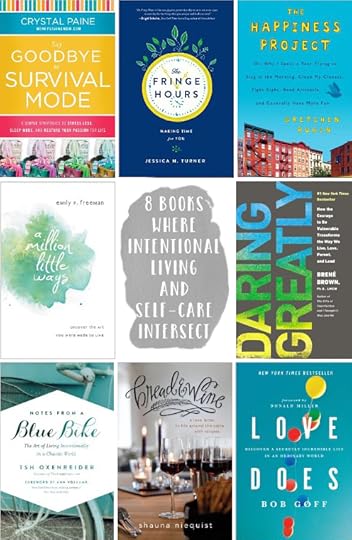
That’s why this list is a collection of both traditional self-care books and others about the broader topic of intentional living. We know that self-care includes things like margin in your day, time for yourself, pursuing your passions, etc. But it also means finding an authentic community, living creatively, and loving others in a way that fills your tank as well as the recipient’s.
The books on this list are ones that I think about often. They’re filled with big-picture principles and day-to-day tips that make them worth reading again and again.
Note: Many, but not all, of these books are written by Christians and include elements of faith in their principles.
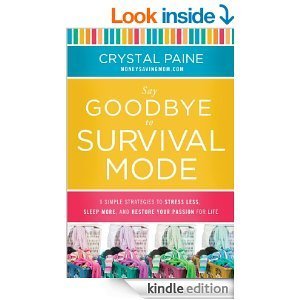
I read this book at the beginning of 2014, and while it’s taken me a full year to really put some of the principles into practice—setting office hours, leaving margin in my day, etc.—every page is packed full of practical tips for escaping survival mode and living a fulfilling life. I would say this is the broadest, most practical handbook on this list!
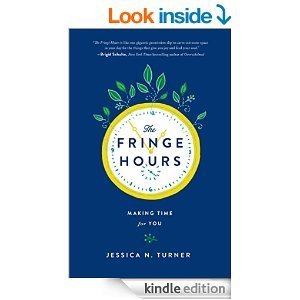
I’m just about halfway through this one, but if you fall into either category above—unsure about the importance of self-care or unsure how to make that time—this book is full of practical tips and insights. It’s written in a casual, conversational style, and it’s a must-read for anyone who struggles to prioritize self-care!
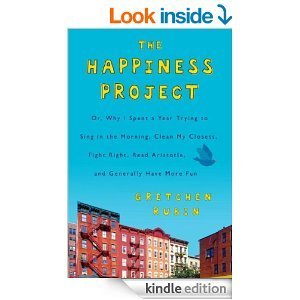 The Happiness Project
by Gretchen Rubin
The Happiness Project
by Gretchen Rubin I loved this book, Gretchen Rubin’s experiments, and her thoughts and research on happiness so much. While joy is lasting and not reflective of our circumstances, happiness is a worthy goal as well, and this book is about finding ways to increase your happiness by changing your circumstances, surroundings, and routines…and embracing the fun of life. Discover practical tips for things like decluttering and creating a morning routine that works as well as more philosophical practices such as contentment and gratitude.
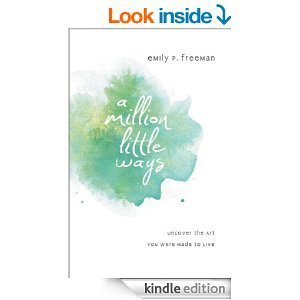
Emily P. Freeman is one of my very favorite authors (I can’t wait to read her next book, Simply Tuesday), and I love A Million Little Ways for its encouragement to live our art, not by becoming an actual artist or even by exploring our creative side, but by seeing everything we do as a chance to be artists—whether it’s wiping the kitchen counters or having a conversation with a stranger in the checkout line. There are a million little ways that our lives can bring glory to the Creator, and very little of it has to do with the art we hang on our walls.
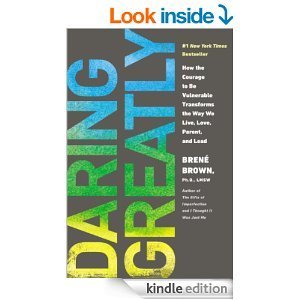 Daring Greatly
by Brene Brown
Daring Greatly
by Brene Brown This book has been slow reading for me, and I can’t quite pinpoint why. Every time I pick it up to read a section, I’m drawn in and want to highlight every other sentence. But then I set it down for a few weeks before picking it up again. That said, Brene Brown’s call to embrace vulnerability in your life—at work, at home, in your close relationships and with strangers—is one that resonates within me. When I try to “protect my image,” I end up exhausted and stressed, but living with vulnerability is freeing. I literally feel lighter, as if I can breathe more deeply.
{And the final chapter—on Wholehearted Parenting—is well worth the cost of the full book. Seriously life changing.}

Notes from a Blue Bike is about intentional living, but it’s also about “paying attention to who you are and what you need” to live a rich, fulfilling life rather than just running to keep up with the hamster wheel. While this book tells Tsh’s story, there are important principles within that framework that make me want to reconsider various aspects of my own life to be sure I’m living authentically and with purpose.
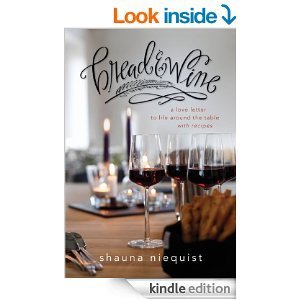
As an introvert, I like to pretend that I’d be perfectly happy on a desert island without anyone else around, but the reality is that we all need friendship and community. In Bread & Wine, Niequist describes the kind of community that fills you up rather than leaves you exhausted and discouraged—an authentic community that happens around meals and the table, without pretense or expectations. Finding this kind of community is definitely a key to intentional living and self-care.
{Next month’s Live course theme happens to be “Connect,” all about community and friendship. If that’s something you’re longing for, be sure to join us!}
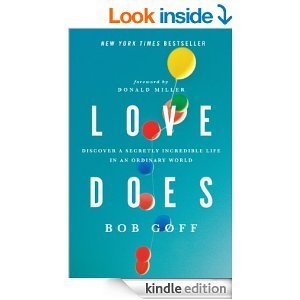
At first glance, it may seem a little crazy to include a book about loving others on a list of self-care books, but I loved this book so much, not because it made me feel guilty for not loving perfectly but because it inspired me to love extravagantly and live an extraordinary life. From the official description: “When Love Does, life gets interesting. Each day turns into a hilarious, whimsical, meaningful chance that makes faith simple and real.” When we love well—not out of obligation or habit, but intentionally and delighting in the loving—we benefit most of all.
What books about intentional living or self-care would you add to this list?
Where intentional living and self-care intersect {and 8 books I love}
© 2010-2015 Purple Martin Press, LLC | All rights reserved



February 25, 2015
The cycle of exhaustion {and an unintentional goal review for February}
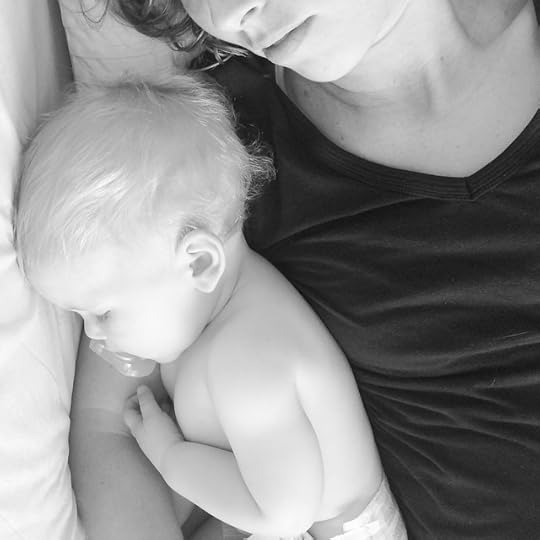
Since our trip to Snowshoe, I have been unbelievably tired. Not just tired: flat-out exhausted.
Part of it is Jack’s sleep (we’ve taken him off gluten to see if that could possibly be contributing to his sleep issues), part of it is the stomach issues our middle daughter is having, and part of it is my own eating habits, which have gotten way off track again.
What I’ve realized, though—realized again, really—is how much being tired affects, well…everything.
I know there are people who function well on little sleep, and I know there are people who still accomplish amazing things when they’re exhausted.
Unfortunately, I’m not one of them.
When I’m tired, I…
…lose all self-control and crave carbs and sugars…which just leaves me more tired (and gaining, rather than losing, weight).
…rely too much on caffeine, which can affect the sleep I do get, and don’t drink enough water
…end up crashing on the couch and zoning out rather than sending myself to bed early for some quality sleep.
…am snappier and less patient with the kids, and I also have more trouble investing in my relationships with each of them.
…read the same line in a book over and over and let my mind wander while I listen to audiobooks.
…skip exercising in favor of a long hot shower.
…turn into a hermit, preferring time alone to time with other people.
…enter survival mode.
Now that I’ve typed all of that out, I think it’s safe to say that this post is my official February goals review. Overall, February was a good month, and I made progress on many of my goals (like January, my biggest success has been in protecting my non-work hours, but—as I mentioned on Facebook and Instagram—now my goal is to protect the work hours as well!)
But I’d be lying if I didn’t admit that being so tired keeps me from being my best me. While some of these circumstances are out of my control, typing this out was a good reminder that I do have control over some of them…and that exhaustion is not a state of being, but a cycle.
There are things I need to do to break that cycle, without waiting for Jackson to magically sleep through the night for two weeks straight so I can catch up on sleep!
Things like…
…choosing to start my day with healthy breakfasts rather than carbs, sugar and caffeine.
…making myself go to bed rather than zoning on the couch.
…prioritizing exercise.
…taking naps rather than wasting time on the computer.
The cycle of exhaustion isn’t good for my body, mind or soul, and while none of those things are easy when I’m tired, I need to remind myself (hourly sometimes!) that they’re worth the work to break the cycle!
What are the signs that you’re stuck in a cycle of exhaustion? How do you deal with it or break the cycle?
The cycle of exhaustion {and an unintentional goal review for February}
© 2010-2015 Purple Martin Press, LLC | All rights reserved


 CommentsI loved the title of this because I fully agree that exhaustion ... by AmyYou are very wise!!! Tired, I know…yet wise! You have nailed ... by amyBy: Sarah {Grounded & Surrounded} by Sarah {Grounded & Surrounded}
CommentsI loved the title of this because I fully agree that exhaustion ... by AmyYou are very wise!!! Tired, I know…yet wise! You have nailed ... by amyBy: Sarah {Grounded & Surrounded} by Sarah {Grounded & Surrounded}
February 24, 2015
Finding inspiration for your doodles {plus 2 printable doodle pages!}
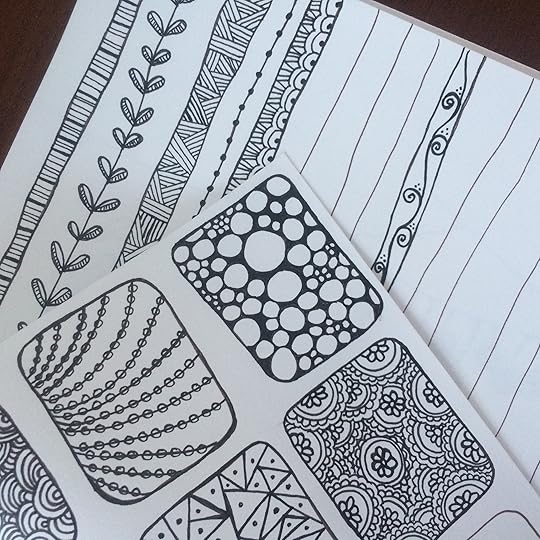
Although I’m still learning the basics of doodling, one thing I’ve started to do in the last couple of weeks is be more intentional about collecting patterns and borders to use as inspiration and to develop my own style (rather than just copying others).
As I was working on these pages in my sketchbook, I thought they would make fun printables as well.

Whether you’re an experienced doodler or wondering whether this is a hobby you would enjoy, use these pages to begin practicing and collecting patterns. They’re great for kids too, but they’re not intended just for kids. Remember, practice—not perfection—is the goal!
To find inspiration for my designs, I started with my collection of doodling books, but now I’m finding inspiration everywhere I look…
Inside a box of Yogi tea:
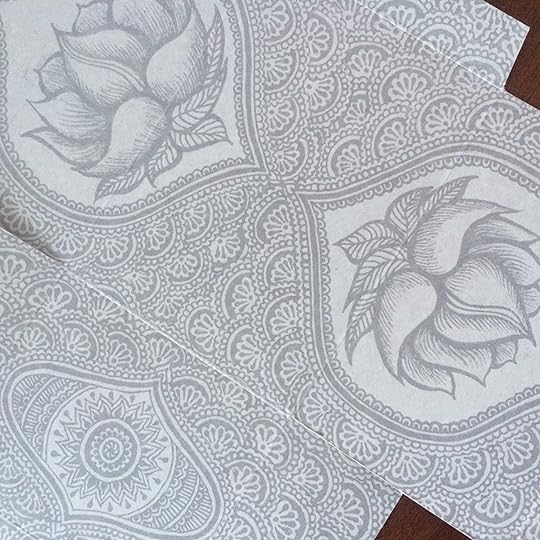
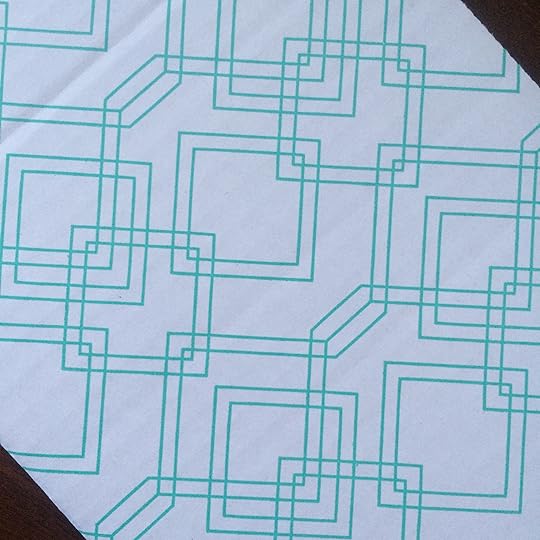 In other people’s art:
In other people’s art:
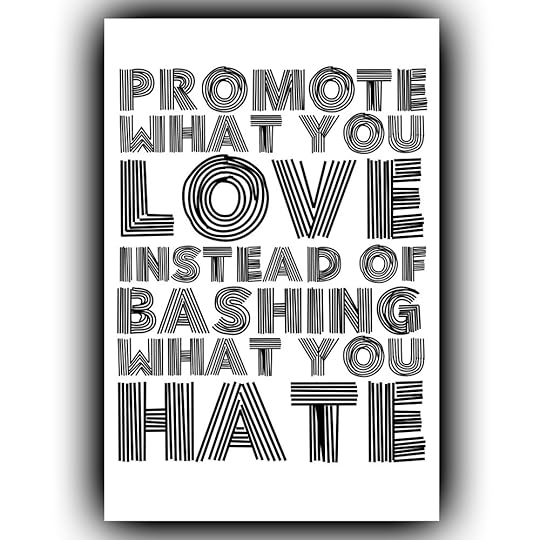
source: The Burlap Bag
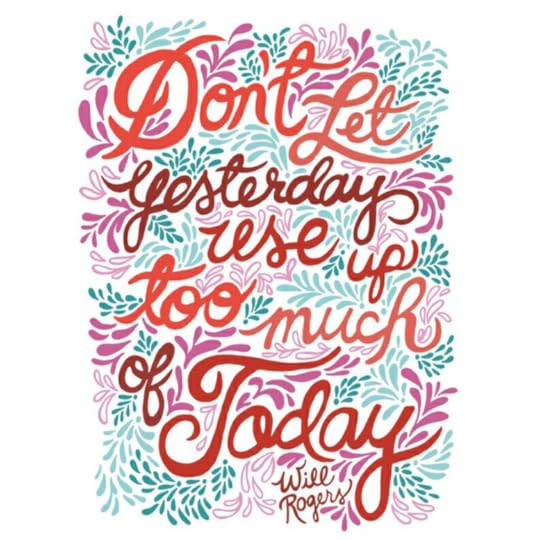
This image was shared without a source on Facebook; please let me know if you know who created it!
On my daughter’s shirt:
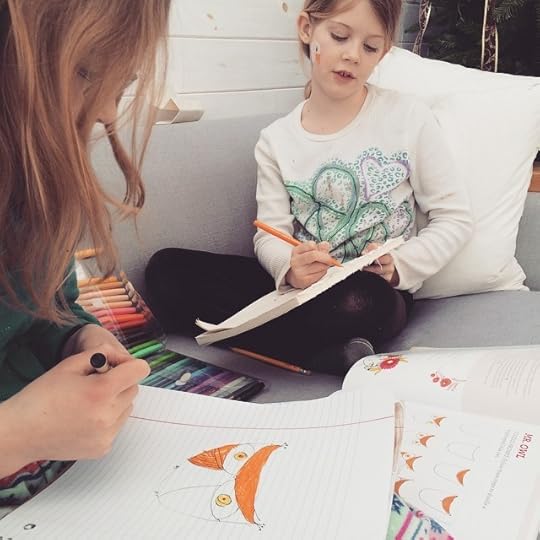
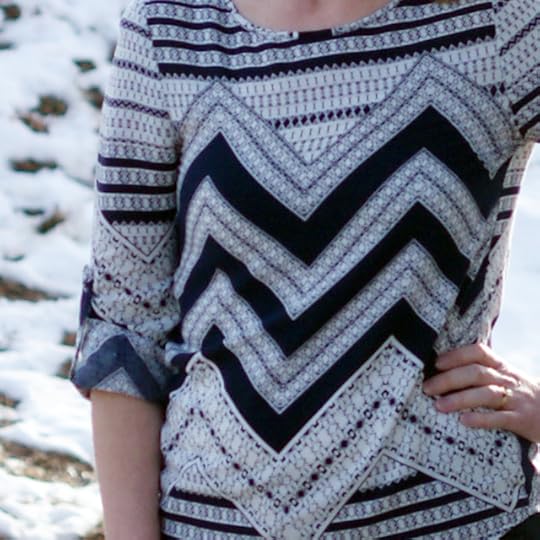
I once read (maybe in Shauna Niequist’s Bread and Wine?) that the best way to make a recipe your own is to follow a three step process:
Make the recipe exactly as written. Make it again, tweaking it for your own tastes and preferences. Make it again without following the recipe.I love the wisdom in this, and I think a similar process can be used for doodling:
Copy someone else’s doodle or pattern. Do it again, but this time add your own flare to the design. Draw it a third time without looking at the original at all.I keep saying this because I think it’s so important: six months ago I would have said I couldn’t draw a stick figure, and I’m pretty proud of how far my doodles have come in that time. The key? I just had to start.
Click the links below to download or print the doodle prompts:
Doodle Prompts: Pattern Play Doodle Prompts: BordersI’d love to see your doodles as well. Come back and upload a picture here in the comments or tag me (@mandiehman) on Instagram!
Finding inspiration for your doodles {plus 2 printable doodle pages!}
© 2010-2015 Purple Martin Press, LLC | All rights reserved



February 23, 2015
Adventures in online clothes shopping {Schoola, Twice & Stitch Fix}
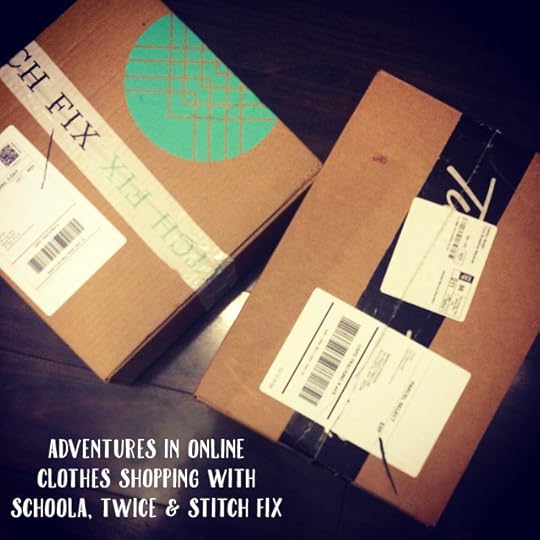
Despite the stereotype that “women love shopping,” I am just not a shopper. Browsing through racks of clothes—or anything really—is my idea of torture, not fun, and when I have to buy something, I shop online as much as possible. {There’s something to be said for shopping with my mom and sister, but that has less to do with the clothes and more to do with time spent with them.}
I’m also not a big clothes spender. I hate to spend more than $15, $20 tops, on a single item, and yet I know that the quality of higher end clothes really does justify their cost as opposed to the disposable fashions of stores like Old Navy, Target and Kohl’s. {Don’t get me wrong…almost all of our clothes for the past 15 years have come from those stores, so I’m not really hating on them, although I do think there are ethical issues with our clothing industry that are worth examining.}
On top of all that, I’m about as unfashionable as they come. I want to look cute. I recognize cute. But putting together my own cute doesn’t come easily at all.
Enter online clothes shopping with Schoola, Twice and Stitch Fix. I’m sharing the good and the bad about all three of these sites based on my experiences. We’ve placed three Schoola orders now, two Twice orders, and I’ve received one Stitch Fix. Here’s what I love, what frustrates me and why I plan to continue to use all three in the future.
**Note, the links in this post are referral links, and our family receives store credit if you place an order through any of them. Be sure to sign up for your own referral links to share with your family and friends!
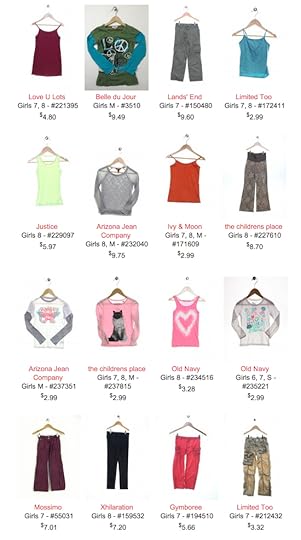
Schoola has revolutionized my shopping-for-kids-clothing experience. Every few months I’ll hop on and order some clothes for a couple of the kids at a time based on what I know they need. We’ve gotten unlucky in that our kids never seem to have the same preferences at the same age/size, so all of the dresses our second daughter wore when she was 7 are sitting in the clothes bin while our third daughter wears holes in the knees of her cargo pants. There is a ton to choose from, with a lot of high quality brands like Lands End and Hanna Andersson. With the exception of one item per order that just doesn’t fit right (in the order above, it’s the blue Limited Too tank, which is very short and has been passed down to the 5 year old), I’ve been beyond happy with everything we’ve purchased so far.
What I love:
The prices are great and I can get higher quality clothes for the amount I typically spend at cheaper stores. Schoola gives detailed information about the quality of every item so that you know whether you’re getting something that’s been well loved already or still has the tags on. 40% of each purchase goes to support the specific school where that item was donated.What frustrates me:
Items aren’t always the color I expect based on the online photo. For example, the Lands End pants in the image above are very, very olive green. That’s not usually a problem but does make it a little trickier to shop for family photos or holidays where I want the girls to coordinate. The search feature isn’t great. For example, there’s no 12-18 month search available, so I have to search both 1 and 2 for Jackson and then sort through each item to eliminate the 12 and 24 month and 2T options to find clothes that fit him now.Click here to browse the Schoola collection and save $15 off your first order.

When I mentioned on Facebook that I was signing up for Stitch Fix, the reaction was strong and instantaneous—half my friends said they love it and half said they hate it. Those who dislike StitchFix shared their favorite alternatives, and when I mentioned my reluctance to shop at thrift stores or consignment shops (see aforementioned reluctance to actually shop in a store), Amy at Mom Advice sent me her Twice link so I could try it online.
I was sold almost immediately by this high-end consignment shop. I shopped for shirts that will work well under my cardigans for the rest of winter and into spring and by themselves as spring transitions into summer. I also picked up two dresses to try for Sean’s sister’s upcoming wedding.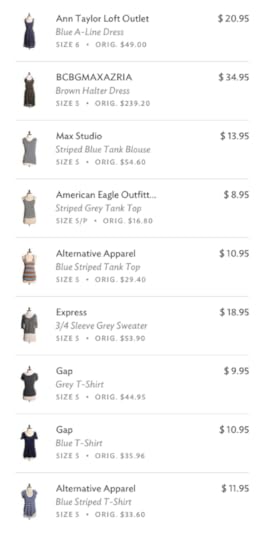
What I love:
Each item includes detailed size information, including bust/waist and length measurements, as well as three photos—from the front, the side and the back. The prices! These clothes are high-quality, expensive clothing for discount store prices. I saved 25% off the prices above, picking up several shirts for $8-10 each and the dresses for $15 and $26 respectively. Everything I received is top quality. I was so excited to realize that every one of these pieces hangs and fits just the way it does on the mannequin in the photo. The Ann Taylor dress is slightly too big (but so cute, so I may need to see about taking it in!), and I should have known better than to get an American Eagle tank in small, but everything looks just like I expected. In fact, I was slightly appalled when I pulled the Gap shirt out of the box because it looked completely wrong (“Did I order this? I don’t think I ordered this!”), but when I put it on, it fit just like that picture above.What frustrates me:
Your items can only be saved in your cart for an hour before they once again become available to other people. Twice offers discounts of 15-50% on a regular basis. That’s a drawback because the urgency of the expiring cart means you might place your order with a 15% off coupon and then see a new 50% off coupon less than 8 hours later. (From now on I’ll wait for the coupon before I start shopping.)Click here for a $10 credit and check the bar at the top of the page for additional special offers.

My girls were as excited about the style cards as I was…who can resist tearing perforated sheets apart?!
Stitch FixThe thing that has held me back from Stitch Fix for so long is the price of the clothes. $78 for a pair of jeans? $48 for a shirt? I am a discount store shopper, and those prices are hard for me to swallow. However, the clothes do justify those prices, and at this point I plan to stick with it. The jeans my stylist sent me were perfect, and I pretty much love the Alfredo Crew Neck Blouse as well. While I could get the same clothes for less at Twice, neither are items I would have ever picked out for myself, and I am so glad she sent them!
I am not a scarf wearer, but the one she sent was so silky soft that I almost kept it. Ultimately I sent it back because it was cream with green and brown accents while I tend to wear blues, greys and blacks (see Twice order above…), and I couldn’t justify $34 for a scarf that didn’t match most of my wardrobe. But I could see myself keeping a scarf in the future.

Uh, I am definitely not one of those sophisticated bloggers that can pose like a model in my Fix outfits; I felt so goofy doing this (and decided to embrace that feeling in the second photo!).
Benefits:
When your friends and family sign up to try Stitch Fix (even if they don’t keep any of the items in their Fix), you receive a $25 credit toward your next fix. That makes it fairly easy to offset the cost of the items you choose to keep. (And I love that it’s not based on whether they actually keep those items!) There is a real live stylist listening to your tastes and requests before selecting items for your Fix. You can influence these choices through the detailed survey, notes to your stylist, and your Pinterest boards. Returning clothes is as simple as sliding them into the postage-paid bag and putting it in your mailbox.Drawbacks:
Well…the price. (There is a 25% discount if you keep all 5 items from your fix, though.) If you don’t keep anything, you still pay a $20 stylist fee; otherwise it’s applied to your purchase. It takes some time for your stylist to get to know you. I wasn’t excited at all about the two shirts on the middle row above, and I would have loved a box full of clothes I wanted to keep, but the success with the two items I’m keeping was enough for me to keep trying for now!Click here to create your style profile and request your first Fix!
***
All in all, I’m excited about these options for intentionally choosing clothes that look and feel good without having to set foot inside a store. While shopping for kids clothes this way is just plain ol’ convenient, I’m excited to see how my wardrobe and style change in the coming year now that I’ve discovered Stitch Fix and Twice for myself!
Do you enjoy shopping? Have you tried any of these sites for clothes?
Adventures in online clothes shopping {Schoola, Twice & Stitch Fix}
© 2010-2015 Purple Martin Press, LLC | All rights reserved



February 21, 2015
Weekend reading: February 21, 2015
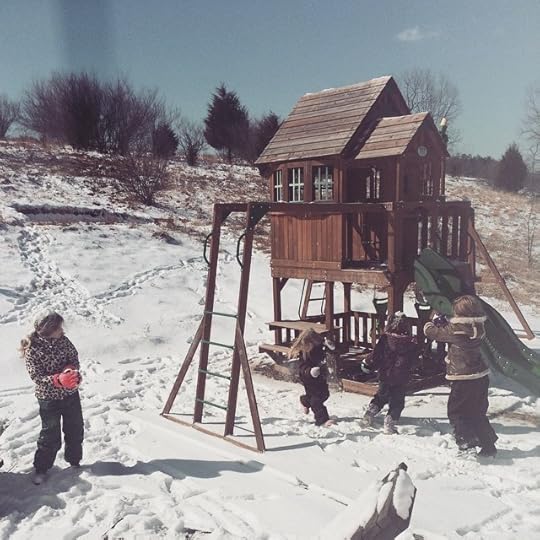
A double batch of pasta sauce on the stove, kids playing in the snow, and The Hobbit on Audible…it’s a good day!
It’s been one of those weeks where nothing goes quite right, brought on mostly by our sweet little man’s horrible sleep habits. Being exhausted means I haven’t been as productive, motivated or kind as I’d like to be, and just when he finally slept fairly solidly, our third daughter woke up in the middle of the night for a 3-hour throw-up session. Maybe I’ll catch up this weekend!
Despite the unbearably cold weather we’re having (I know those of you in colder places are laughing at me, but single digits is just too cold), we were excited to finally get a few inches of snow. The girls didn’t stay out nearly as long as they normally do, but they still had fun playing in the snow after waiting all winter for a good snow storm. Curse you, Farmer’s Almanac for getting our hopes up for a snowy winter!
What I’m reading: To Kill a Mockingbird by Harper Lee, The Fringe Hours by Jessica Turner, Team of Rivals by Doris Kearns Goodwin, The Hobbit by J.R.R. Tolkien
What I cooked: hawaiian crockpot chicken, perfect hamburger buns, stuffed shells with homemade pasta sauce, chicken quesadillas, baked chicken and (frozen) french fries
What I’m thinking about:
{Follow my personal Facebook feed for the things I’m thinking about and talking about all week!}
On Moms and Their PassionsJessica Turner’s The Fringe Hours was released this week, and I’m enjoying her insights into the importance of self-care and how to achieve it in the midst of everything else going on in your life. Here are a few related posts that I’m sure most of us can identify with, regardless of our individual experiences:
5 Ways Your Children Benefit from Your Passions | HuffPo On burnout. | Modern Mrs. Darcy How To Take Care of Yourself When Your Job Is Taking Care of Others | We are THAT Family On Lent & Easter 40 Ways To Celebrate Jesus This Easter | Oh Amanda Why Lent Still Matters | Relevant Magazine Why You May Really [Really] Need Lent This Year {and a free devotional} | A Holy Experience February Encouragement for Homeschoolers 5 Tips for Avoiding the Comparison Trap | Simple Homeschool Seven Things Homeschoolers Won’t Tell You | HubPages Conquering clutter for homeschoolers | Simple HomeschoolHave a great weekend!
P.S. Next month we’re talking about friendship, connection and community in the Live course, with guest contributor Crystal Paine! Sign up to join us.
 Mandi Ehman is the blogger behind Life Your Way. She and her husband have four beautiful girls plus one baby boy, and together they live, work and homeschool on a little slice of heaven in wild, wonderful West Virginia. Mandi loves coffee, chocolate, easy meals, beautiful things and minimalist spaces.
Mandi Ehman is the blogger behind Life Your Way. She and her husband have four beautiful girls plus one baby boy, and together they live, work and homeschool on a little slice of heaven in wild, wonderful West Virginia. Mandi loves coffee, chocolate, easy meals, beautiful things and minimalist spaces.
Weekend reading: February 21, 2015
© 2010-2015 Purple Martin Press, LLC | All rights reserved



February 20, 2015
On the difference between being prideful and being proud of who you are

You know how you can tell that you struggle with pride? When you’re terrified to admit you are prideful because of what others might think.
Ironic, isn’t it? But that’s exactly where I found myself for many years in my early 20s.
I accomplished a lot in my teen years and early 20s, receiving more than my fair share of lucky breaks—and subsequent pats on the back—and it very much went to my head.
I was prideful: overly confident—arrogant, even—and I considered myself better than other people. But at the same time, I was terrified that someone would see through the facade and realize that I wasn’t so perfect after all.
My late-20s brought a lot of maturing. I learned to respond to other people with grace, without pointing out their mistake (most of the time, anyway). I realized that I’m not actually all that perfect (surprise, surprise!) and that no one really expects me to be anyway. I learned to accept and even ask for other people’s advice. I learned that people aren’t thinking about, paying attention to or even noticing me as much as I think they are. And I learned that it’s incredibly freeing to let the people who are watching see the real you.
But I think the trouble we run into is thinking that the opposite of pride is low self-esteem. The opposite of being prideful is not thinking badly about yourself, and there’s nothing wrong with being proud of the things you’ve accomplished or done. Those words might be related, but the definitions I’m using show that they’re very different.
pride or prideful :: a high or inordinate opinion of one’s own dignity, importance, merit or superiority, whether as cherished in the mind or as displayed in bearing, conduct, etc.
proud :: feeling deep pleasure or satisfaction as a result of one’s own achievements or qualities
At its core, low self-esteem is just pride in the negative. It’s a “low or overly negative opinion of one’s own dignity, importance, merit, or unimportance, whether as cherished in the mind or as displayed in bearing, conduct, etc.” It’s still placing all of your focus on yourself while exaggerating the things you lack instead of your strengths.
As C.S. Lewis says, “True humility is not thinking less of yourself; it is thinking of yourself less.”
I once read a quote—which I haven’t been able to find again but has always stuck with me in spirit—that basically says humility is the ability and willingness to recognize and celebrate the accomplishments of others along with your own. This quote from Rabbi Nilton Bonder comes close: “A humble person is totally different from a person who cannot recognize and appreciate himself as part of this world’s marvels.”
Be proud of who you are. If you’re kind or thoughtful, intellectual or artistic, loving or justice-minded, be proud of that. Be proud of what you accomplish. Whether it’s meeting a goal, launching a business, mentoring other people, starting a charity, or learning a new skill, be proud of it.
Find satisfaction in who you are—in who God made you to be—and in the things you do. Don’t become so focused on them that you cross over into pridefulness or arrogance. But don’t pretend the strengths and accomplishments don’t exist either.
Humility doesn’t mean downplaying your skills, talents or accomplishments; it means considering them on the same level as the skills, talents and accomplishments of others without having an overinflated ego or feeling the need to downplay the skills, talents or accomplishments of other people. It’s recognizing yourself—and all of the people around you—as “part of this world’s marvels.”
When have you felt most proud of yourself? Do you struggle with the distinction between humility and low self-esteem?
On the difference between being prideful and being proud of who you are
© 2010-2015 Purple Martin Press, LLC | All rights reserved



February 19, 2015
The dirty secret of creativity {and the doodles I don’t really want to show you}
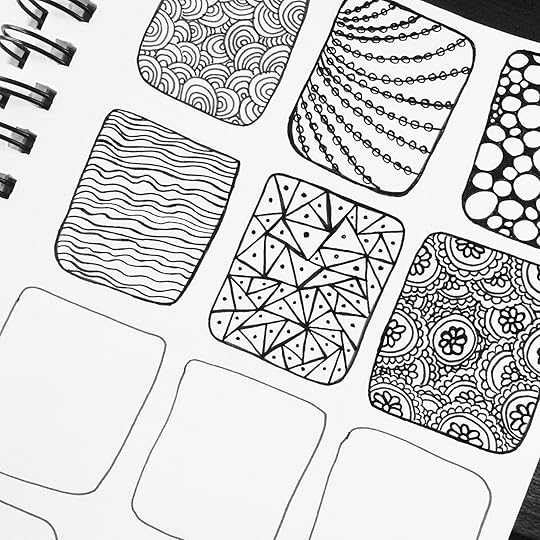
Doodles I love.
I’ve mentioned before that for a long time I simply didn’t consider myself creative. While there’s no doubt that I’m pursuing creativity more often now, I still find myself fighting the urge to qualify my art by explaining that I’m not really an artist (for example, I wanted to put art in quotes so badly just so no one thinks I take myself too seriously).
As I’ve been thinking about my new approach to creativity and what it means to really pursue a craft and call myself creative, I’ve realized that I’ve probably always been creative—and, honestly, I think creativity is part of everyone’s soul—but perfectionism led me to bury that part of myself.
Because here’s the thing: Making good art requires a whole lot of messiness in the process. Sure, there are probably a prodigies or savants who can pick up a pencil or paint brush or instrument and create something truly beautiful without any effort. But for the rest of us, it takes work. It takes experimenting and trying new things. It takes messing up and figuring out what doesn’t look or sound good and what the difference is between the things that resonate in your soul and those that don’t. It takes pushing the limits to try new things, discover your style, and stretch your skills.

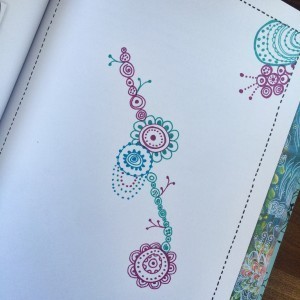
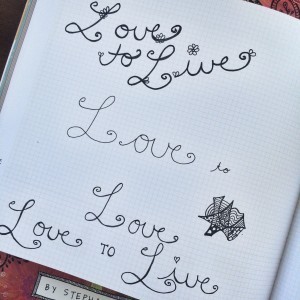
Doodles gone bad.
For those of us who are perfectionists, art is a painful process. While I’ve been writing publicly for years, I write most of my words on the computer, which means I can easily backspace, delete and edit. I can clean things up and no one will ever see the earlier drafts. Drawing on paper is a different beast altogether. There’s a very real chance that someone will glance over my shoulder as I doodle and see a doodle that just can’t be cleaned up and made pretty. And even if they don’t see it in process, it’s in my notebook or book, as a permanent record of those “failures.” When I venture into hand-lettering, where it’s even harder to edit and add and change what’s already been drawn than it is with doodling, it gets even more painful.
I’ve learned to use a pencil this month, not because I’m giving into fear but because it does help to sketch something out, play with proportions and lines before tracing it permanently in ink. But I’m also learning to accept that not every letter or doodle I attempt will be “portfolio” worthy. And that is okay. It’s like falling while you ski; it’s not fun, but it means you’re trying new things and pushing yourself. Which means it’s not just okay but actually a good thing.
No one wants to put their mistakes out there for others to see, and art is so intensely personal that it makes doing that even harder. But accepting the process is an important part of being able to really grow!
Do you consider yourself creative? An artist? Is the messiness of learning new things easy or hard for you to accept?
The dirty secret of creativity {and the doodles I don’t really want to show you}
© 2010-2015 Purple Martin Press, LLC | All rights reserved


 CommentsMandi, thank you! I struggle with perfectionism, art, and ... by LynneI just have to say that what you consider “messy” or ... by LibrarianLizy
CommentsMandi, thank you! I struggle with perfectionism, art, and ... by LynneI just have to say that what you consider “messy” or ... by LibrarianLizy
February 18, 2015
Technology in our homeschool
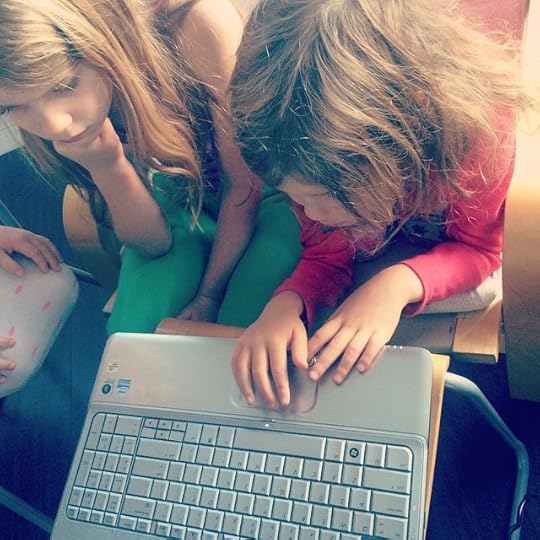
One of the biggest—and most surprising—changes to our homeschool this year has been the addition of technology. Although we’ve always used an iPad for memory work and audiobooks, and we are on our third year of using Teaching Textbooks, this is the first year we have fully embraced technology as a learning tool.
The big girls (3rd and 4th grade) now do vocabulary, spelling, Latin, a foreign language (French and Spanish, respectively), and Teaching Textbooks on the computer. Our oldest also writes her Essentials papers on the computer, and all three big girls have started typing various stories in their spare time. And (just this week) we’ve started using the Routines app for their daily checklists.
Why did we make this change?
Part of my motivation is the success we’ve had with Teaching Textbooks as part of their independent work, but the other part is that it helps our girls stay motivated and engaged with some of the more “tedious” parts of their daily tasks. Our oldest loves to write, but is not a fan of the actual writing-on-paper part. Practicing spelling words is more fun when wrapped up in games. And some things—like learning a foreign language—are just more effective in an interactive format.
We are still pretty stingy about technology use outside of school time, although I’ve recently loaded a few more educational games to the iPads and iPods with the intent of giving them more freedom for those things as well.
At the beginning of the school year, my parents generously passed down a laptop and iPad for the girls to use, which means we now have 2 laptop, 2 iPads and 2 iPods in addition to the computers and phones my husband and I use. It’s a bit on the excessive side, except there are so many of us sharing them every day! We’ve just recently assigned each of the iPads and iPods to the girls as their “own” (although they know that ultimately, we reserve the right to set the rules and take them back)
Recently I’ve read a few posts, articles and Facebook comments about the dangers of technology for kids. I agree that there are very real concerns that we need to be aware of, but there are dangers in dismissing it altogether as well. I still remember my first computer classes in 1st or 2nd grade and the Tandy computer I got for Christmas when I was 7. I spent hours using Print Shop on DOS to make cards, banners, etc. and writing my own reports on the computer. While the possibilities for abuse and addiction are much greater now due to advances in technology, I still want to give our girls the opportunity to use them as tools in the same way we did 20-25 years ago.
It’s easy to lump all technology together, especially if you’re opposed to its use, and there is still a part of me that wants to limit their screen time for interactions with the “real” world. But it’s hard to replace things like interactively building atoms or putting together the human body, watching demonstrations on a wide variety of specialized topics, or practicing math facts in a rapid fire game that gets them excited about learning them. To lump these things together with Angry Birds or social media as harmful technology feels shortsighted to me.
Rather than focusing on avoiding technology, I’m focusing on the things I want them to embrace—time exploring outside, physical activity, reading about the world, kindness to one another (this is a big on right now!)—and developing self-regulation with their technology use. As long as those things are happening as well, I’m thankful for the addition of technology in our learning toolkit!
How do you feel about technology in your homeschool or for your kids in general? Has that changed over time?
Technology in our homeschool
© 2010-2015 Purple Martin Press, LLC | All rights reserved






